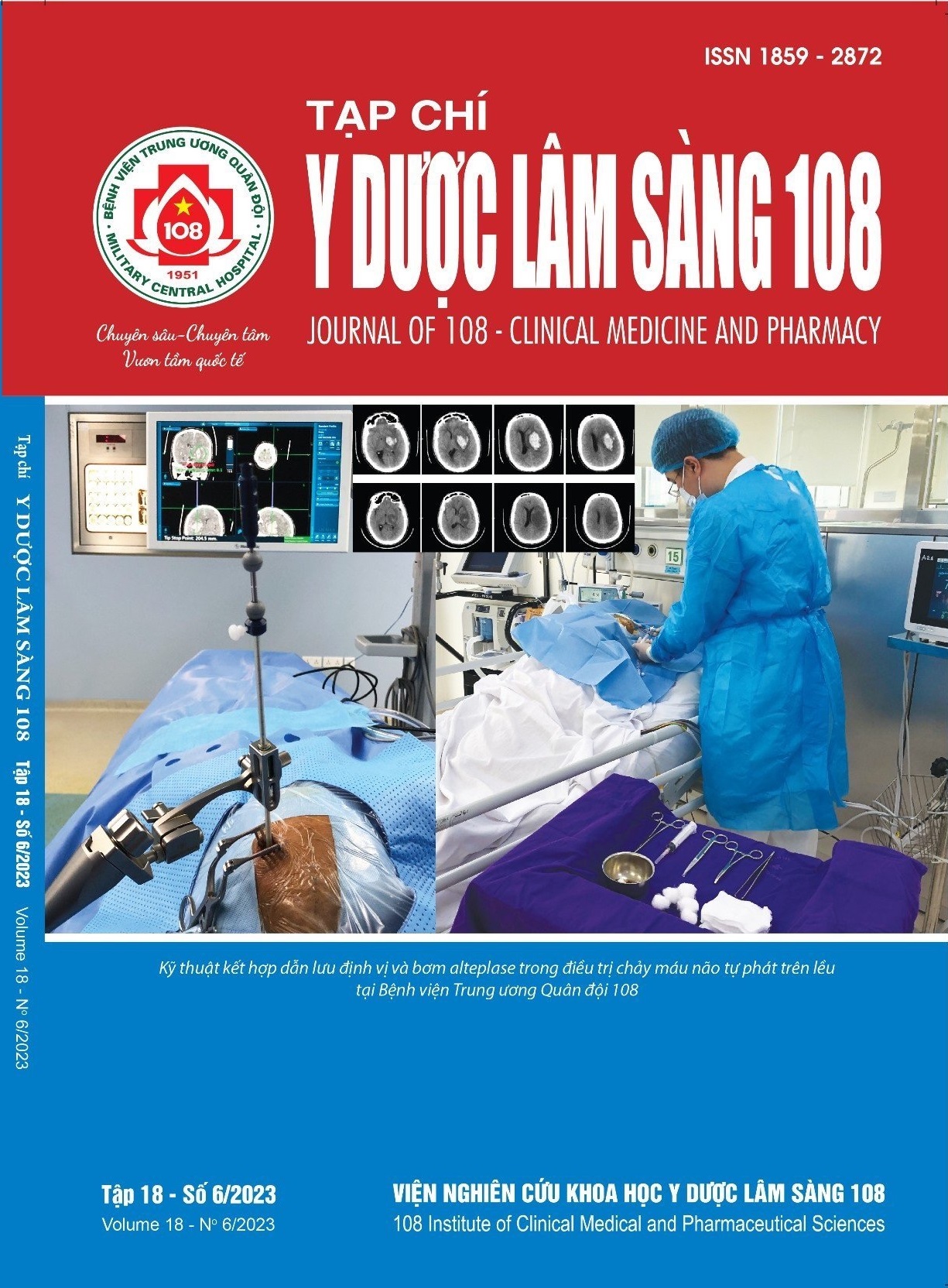Clinical characteristics, serological response and management result in syphilis patient at Ho Chi Minh City Hospital of Dermato-Venereology (02/2020-10/2020)
Main Article Content
Keywords
Abstract
Objective: To describe epidermiology, clinical, serology characteristics and management result of syphilis patients with the antibiotic benzathine penicillin at the Ho Chi Minh City Hospital of Dermato-Venereology (February 2020 to October 2020). Subject and method: Descriptive study: Case series. Diagnosis of syphilis is based on a combination of clinical history, physical examination and serologic test results (RPR = Rapid plasma reagin; TPHA = Treponema pallidum haemagglutination test). Eligible participants are all clinical stage of syphilis and untreated patient within the last year. Syphilis patients were treated by guideline of Ho Chi Minh City Hospital of Dermato-Venereology (2019) and follow up the reactions after treatment. Result: 92 patients were included (12 primary, 55 secondary and 25 latent syphilis). The majority of patients were MSM (72.8%), age between 20-29 years old (62%) and single marital status (70%). The main sexual behavior were oral-genital sex (66.3%) and anal intercourse (64.1%). The prevalence of HIV/syphilis co-infection among participants of this study was 32.6%. In secondary syphilis, serum RPR titer between R8-R64 was frequently found (74.5%). The overall incidence of the Jarisch-Herxheimer reaction after treatment was 46.7% and the most symptom was fever (74.4%). The longest time to clear all syphilis clinical findings was 30 days. Conclusion: Our findings suggest that core syphilis patient group currently may be MSM with specific factors. These data are consistent with studies from many countries. Future research should continue to investigate risk factors associated with this core group as well as provide the adequate local syphilis control.
Article Details
References
2. World Health Organization (2016) Global health sector strategy on sexually transmitted infections 2016*2021: Toward ending STIs. Geneva: World Health Organization.
3. Nguyễn Thị Thu Hường, Nguyễn Thị Phương Lan, Nguyễn Minh Ngọc và cộng sự (2019) Tỉ lệ đồng nhiễm viêm gan B, viêm gan C, giang mai, mụn cóc hậu môn sinh dục và lậu ở nam quan hệ tình dục đồng giới mới biết nhiễm HIV. Tạp chí Y học Dự phòng, 29(11), tr. 63.
4. Cheng W, Wang C, Tang W et al (2020) Promoting routine syphilis screening among men who have sex with men in China: study protocol for a randomised controlled trial of syphilis self-testing and lottery incentive. BMC Infect Dis 20(1): 455.
5. The Global Health Observatory - Men who have sex with men (MSM) with active syphilis 2018 [cited 2022. Available from: https://www.who.int/ data/gho/data/themes/topics/indicator-groups/ indicator-group-details/GHO/ men-who-have-sex-with-men-(msm)-with-active-syphilis.
6. Nguyễn Thị Thanh Thơ, Văn Thế Trung (2017) Đặc điểm dịch tễ, lâm sàng, phản ứng huyết thanh và hiệu quả điều trị trên bệnh nhân giang mai II tại Bệnh viện Da liễu TP. Hồ Chí Minh giai đoạn 2015-2016. Tạp chí Y học Thành phố Hồ Chí Minh, 21(1), tr. 67.
7. Trần Thị Ngọc, Lý Văn Sơn (2015) Nhiễm HIV ở nhóm nam quan hệ tình dục đồng giới tại tỉnh Thừa Thiên Huế năm 2014. Tạp chí Y học Dự phòng, 10(175), tr. 177.
8. Đinh Công Thức, Lưu Huỳnh Bảo Châu, Nguyễn Ái Hồng (2017) Đánh giá nguy cơ lây nhiễm HIV và tiếp cận truyền thông về HIV/AIDS trong nhóm nam quan hệ tình dục đồng giới tại thành phố Cần Thơ. Tạp chí Y học Dự phòng, 27(11), tr. 216.
9. Arando M, Fernandez-Naval C, Mota-Foix M et al (2018) The Jarisch-Herxheimer reaction in syphilis: could molecular typing help to understand it better? Journal of the European Academy of Dermatology and Venereology: JEADV 32(10): 791-795.
10. Tsai MS, Yang CJ, Lee NY et al (2014) Jarisch-Herxheimer reaction among HIV-positive patients with early syphilis: Azithromycin versus benzathine penicillin G therapy. J Int AIDS Soc 17(1): 189-193
 ISSN: 1859 - 2872
ISSN: 1859 - 2872
